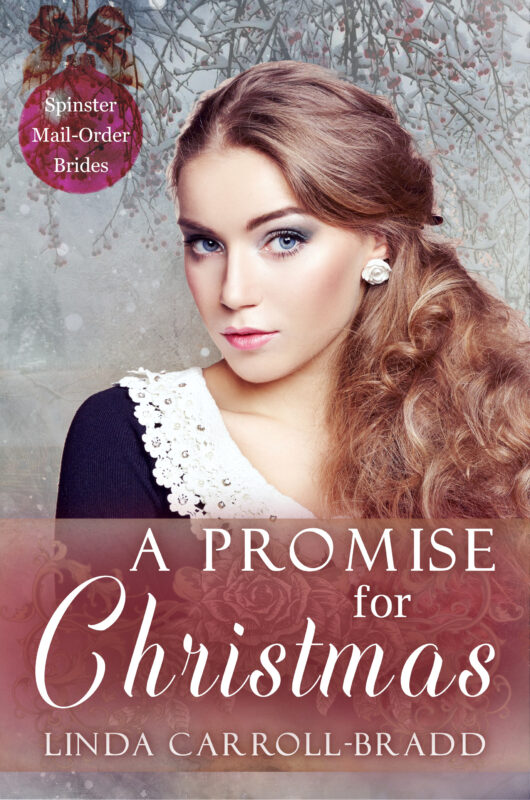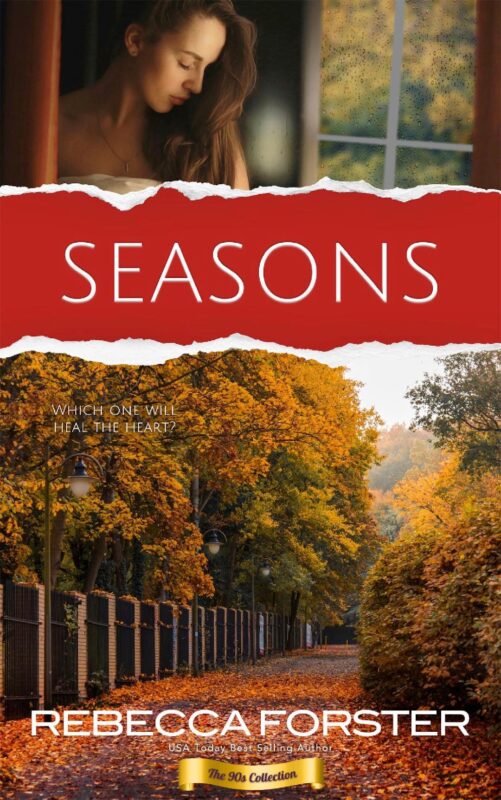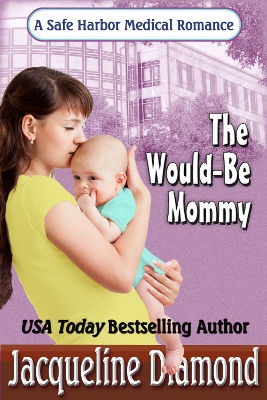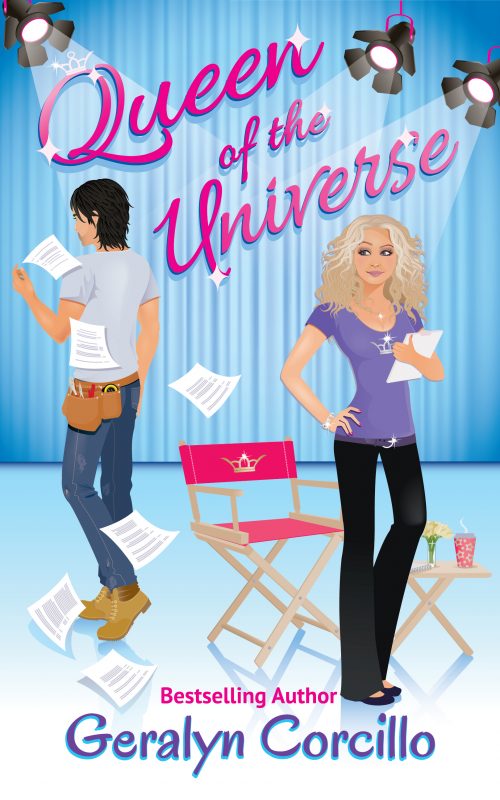BOOK RESEARCH—PEOPLE WATCHING by Will Zeilinger
February 3, 2023 by Janet Elizabeth Lynn and Will Zeilinger in category Book Research, Partners in Crime by Janet Elizabeth Lynn & Will Zeilinger tagged as Book Research, People watching, writers, writers life
Researching for a book takes many forms. When it comes to finding unique characters, I love to people-watch. That activity allows me to discover interesting physical characteristics and mannerisms I can use to flesh out some of the people (and animals) who make up the cast of characters. For most of my working career, I was a visual artist, which included being a graphic designer, photographer, illustrator, and cartoonist. Most of my projects involved sketching out how an ad or layout would appear. I always carried something to sketch out interesting people or places I encountered.
People-watching is especially helpful when writing a contemporary piece. Fashions (especially among teens) change quite often. Different age groups have certain “uniforms” but it’s best to avoid clichés. In the summer, for instance, older male baby boomers are fond of Hawaiian shirts or silk-screened T-shirts, cargo shorts, Ray-Ban sunglasses, and sandals. While women of the same age can be found wearing crop pants, tank tops or French-cut tees, and thin-strap sandals. Both genders are often found with a “fanny pack” strapped around their waist or slung over their shoulder. This doesn’t apply to everyone in that age group. More artistic women may gravitate to a caftan or flowing broomstick skirt and maybe a load of clunky costume jewelry.



Besides clothing, the way a person wears their hair can give clues about the character you are building in your mind. Do the men look like they get haircuts every week, once a month, or is it shaggy like they rarely ever get it cut at all? Do they get it cut as if they are still in active military service? Hairstyles can tell you if your character is one who is trying to recapture their youth, or if they go to the same salon/barber that their grandparents did.
Watching people can expose you to a multitude of variations. Don’t forget to look at their posture and stance. That can say a lot about the character’s attitude or general mood.
I live near the beach, and although it is not summer at the time of this writing, teens can still be found with a skateboard in hand, earbuds, and, of course, the ubiquitous cell phone.
If your story takes place in the Midwest or in New England, the whole scenario changes.
Some great places to watch people being people are checkout lines at big box stores, sporting events, airports, doctor/dentist waiting rooms, parks, libraries, post offices and other public places. Parents and grandparents are very interesting to watch when they are picking up kids/grandkids from school.



Wherever you choose to observe potential characters, remember to be courteous and subtle. Especially if you are researching children or young people. Don’t make it obvious you are taking notes. Of course, many writers rely on those they know to provide these character clues, but since we all belong to different socio-economic groups, using only those around us can skew your character descriptions.
Be open-minded and have fun looking for characters in the people you watch. It’s a great lunchtime activity—just, don’t stare. We’d all like to see these people in your book.
The Skylar Drake Series Co-authored by Will and His Wife Janet Elizabeth Lynn
Criticism: Big Girl Panties for Ruth by Jenny Jensen
February 19, 2021 by Jenny Jensen in category On writing . . . by Jenny Jensen tagged as constructive criticism, critiques, Editors, Jenny Jensen, writers
Or How to Take It on the Chin and Grow
(From our archives. We hope you enjoy this rerun from Jenny Jensen)
I attended an author’s chat the other day at our local library. It’s always fun to hear an author talk about their craft— especially if you like their books. The bonus is mingling with other attendees. Who among us doesn’t enjoy chatting with fellow book lovers? I found myself in conversation with two women, each funny, gracious and interesting. When talk got to the inevitable “so what do you do?” I learned Kit was a nurse and Ruth, a writer. I added that I’m an editor and while Kit smiled acknowledgment, Ruth scowled.
Ten minutes later—after Kit had smiled apologetically and bowed out—I’d learned all about Ruth’s experience with editors. “They call themselves editors, but they’re really just critics. They couldn’t even follow the story, let alone the subtext. They’re just mean, simple-minded wannabe writers” and so forth. Yowza! I’d never encountered that before. I know a lot of editors, and none of them fit that bill. Best to just nod and try to look sympathetic while keeping an eye peeled for a graceful escape. Ruth had either met the world’s worst editors, or she’s simply unable to handle criticism. I suspect the latter.
Writing is hard, solitary work. It’s just you creating in a vacuum. Writing requires hours of reading, writing and revising, searching for just the right words to make a character live and breathe, the perfect plot twist, the right feel. Writing writing writing, and then hours of revision. The whole blood, sweat and tears combo. Then there’s the criticism; every writer has to face it if they want to share their work outside that creative vacuum.
It can be a hard pill to swallow. I know. I’ve been singed by some very savvy, very critical edits. Hard to have your heart and soul — not to mention all that BS&T—picked to pieces by others. But like mammograms, taxes and dirty diapers, it has to be faced.
As an editor, I’m really loath to offer a ‘critique’. That word has such baggage. If words have color, then criticism is a red-tinged pulsating mash-up of bruised blue and black. I prefer to think of what I do as editorial assessment, or an overview. (Words really are powerful, aren’t they?!) But no matter how I spin it, it comes down to criticism.
Criticism is like cholesterol; there’s the good kind and the bad kind. The LDL kind, the bad kind, is empty criticism. “ I don’t like it”, “Flimsy and transparent” or “I don’t get it”. My favorite being, “yeah, I read it. Interesting”. Ouch! Then there is the polite, painless approach: “Very nice!” What could that possibly mean?
Constructive criticism is HDL cholesterol, good for every writer’s circulation. Good criticism points out pitfalls and weaknesses, but it also explains why they are pitfalls and weaknesses. It sheds light on why it doesn’t work. Really good, healthy criticism offers solutions. I never expect an author to accept a solution I offer (and most don’t, they find their own). I offer it as a straw man—something to consider, breakdown, reject and replace with a better approach because suggesting a substitute shows the author the problem needing a solution. It’s because a writer creates in isolation that they can’t always hear a misstep. I’m guessing Ruth’s missed subtext was so sub it wasn’t there. Point this out to a writer and the light bulb goes on; they revise, and the story is stronger.
How should you, as a writer, react to criticism? You wrote it, you shared it—you must learn to account for it. How do your words strike people? Did the reader see nothing where you intended a scene to be revealing or suggestive, and so the story is confusing? You can’t dismiss the reader as thick, dense or stupid. You have to look at your words and consider improvement because clearly, those words didn’t do the job you had intended. Whether it’s a missed plot point or character motivation that can’t be seen, maybe it isn’t on the page; it’s still in your head. Revise, rewrite. Listen to the audience your words are intended for. The best writers respect their readers. Your work will only get better.
A good editing critique helps you identify weaknesses. Don’t take it personally. Constructive criticism is useful precisely because it isn’t personal. Your BFF is unwilling to risk a response that might be hurtful, but is that what a writer needs?
Writing’s about kicking doubt in the ass and shoving him out the door. Editing’s about inviting him back in for tea and scrutiny. *
I wish Ruth had invited her editor back in.
*from @novelicious, that magical twitter feed that is double chocolate for every writer’s sweet tooth.
0 0 Read moreWhite Space by Kidd Wadsworth
September 18, 2019 by Kidd Wadsworth in category Infused with Meaning by Kidd Wadsworth tagged as emotions, writers
Death is the absence of life. It is the white space on a painting, an empty hospital bed, a silent room, a closet of clothes. Death is the extinction of a species of only one. I closed my eyes. I woke, and he was gone. They took his body in the night. They came for the bed and the wheelchair by noon. We reduced his life to a photo and two columns in the newspaper. We sang his favorite songs. We spoke, “he was good friend, a wonderful father and an average golfer.”
Emotion is the currency of all good writers. But what if there is no emotion? What if death brings not regret, or anger, or longing, or even peace, but rather echoes? Did he call my name? I turned my head. Was that him, walking into his office?
Where is the salty taste of my tears? I become white space.
Can someone please tell me how to feel?
6 0 Read moreIf It Were Easy, We’d All Be Best Sellers
July 13, 2019 by Bethlehem Writers Group in category From a Cabin in the Woods by Members of Bethlehem Writers Group tagged as Best Sellers, Bob Mayer, conferences, writers

From a Cabin in the Wood featured author is DT Krippene. DT is a contributing author in the recent BWG’s paranormal anthology, Untethered. A man buys a house for a price that is too good to be true, until he discovers the bizarre strings attached in “Hell of a Deal”. He’s also contributed articles for the Bethlehem Writers RoundTable with “Snowbelt Sanctuary”, and “In Simple Terms”.
A native of Wisconsin and Connecticut, DT deserted aspirations of being a biologist to live the corporate dream and raise a family. After six homes, a ten-year stint in Asia, and an imagination that never slept, his annoying muse refuses to be hobbled as a mere dream. DT writes dystopia, paranormal, and science fiction. His current project is about a young man struggling to understand why he was born in a time when humans are unable to procreate and knocking on extinction’s door.
<
p style=”text-align: left”>You can find DT on his website and his social media links.
Facebook
Twitter
Pinterest
If It Were Easy, We’d All Be Best Sellers
DT Krippene

Writers have an abnormal predilection for planting themselves in a chair like a lone desert cactus, surrounded by nothing but sand, and wait for the words to rain. How is that even remotely natural?
After a writer’s conference last year, I took some time to reflect on what I’d learned, what I’d heard before, and why the hell I was still writing.
Our keynote speaker was NYT Bestseller, Bob Mayer, a former Green Beret who wrote the Area 51 series, as well as 70 other titles in fiction and non-fiction. We listened to advice on the standard elements of plot, story structure, character, the importance of tight narrative, and dangers of going off on tangents that don’t move the story. Anyone who has read my article from last year, ‘The Perils of Captain Tangent – a Pantser’s Writing Journey‘, knows I have an issue with side stories that end nowhere.
Only Five Percent Even Finish a Book
Bob shared a harsh lesson given to soldiers wanting to be Army Rangers, one easily applied to writer success. “Everyone stand up, look at the person on the right, then look at the one on the left. Only one of you is going to make it.” He reminded us that only five-percent of all writers ever finish a book, that five-percent get to the point of publishing the book, and five percent of those people ever get anywhere with it. In simpler terms, earning enough to buy a case of Yuengling beer is like winning the lottery.
For writers who’d never heard it before, the eagerness visibly drain from their faces. Reality bites. For me, the message I took away had less to do with sobering statistics I already knew, or the writing process I’ve been refining for years.
Harness the Chaos
Growing up, I had an imagination fueled on nuclear ether. I tried to harness the chaos of that imagination by penning it on paper. A bit intense when gripping a pen, my fingers cramped within an hour. I got a D+ in high school typing class, unable to master a typewriter without buckets of whiteout and erasable bond paper. It would take access to a modern word processor and the ability to backspace and delete with impunity, before I struck up the nerve to start writing again many years later.
Thirty-plus years traveling for corporate America offered ample opportunities at boarding gates, on flights, and hotel rooms to write. While living overseas, I landed a non-paid gig writing articles for a local travel magazine. It was fun, and I acquired a small fan base.
Back to last year’s conference, they asked, “Why are you writing, and what’s your goal? How passionate are you about what you’re doing?”
Hell of a question. What do I want to be, besides thirty-years younger? I remembered a book I’d read about rebooting life when the distraction of a workaday world subsided. It asked similar, tough questions like, what gave me passion in my younger years. What was it I dreamt of as a kid?
The answer: I enjoyed times alone inside the chaotic ether of my imagination. After rendering to Caesar the things that are Caesar’s, I wanted to mine that creativity and put it in words.
Stories are easy, but . . .
The stories came easy, but understanding the mechanics of plotting and structure was a different breed of cat. I can quote the basic laws of chemistry, but dangling participles was something I learned on the fly. My first 300-page attempt was a laughable exercise that encouraged (I am a writer, I am, I am, I am), and depressed me (Dear Occupant, thank you for your submission, but …). Not having a pedigree that comes with a Fine Arts education, I had a steep hill to climb.
The journey took me on a rediscovery of subjects I’d glossed over in secondary school, like grammar. The proper use of commas was enough to send me to the nut house. Thankfully, Word spell check kept me from giving up entirely. I networked with authors and joined writer groups. Surviving a critique process from fellow writers is not for the weak-hearted.
I went to conferences to learn about the business of getting published. Rejection by the hundreds required the skin of a stegosaurus. With the prolificacy of traditional and indie publishing (an unending tsunami of content in Bob Mayer’s words), being published today is akin to the lone salmon swimming downstream against the horny hoards going the opposite direction during spawning season.
“Old dogs must learn new tricks”, Bob Mayer said. Exhuming a passion, buried for decades in a lead-lined box of adult obligations, can be one of the hardest things in a person’s life. It felt good to hear a professional corroborate what I had to learn on my own.
It takes Passion.
It takes Perseverance.
It takes Risks.
I’ve published a few short stories, but have yet to find a market for the five books I’d written. A wonderful agent tried to market two books I wrote a few years back, but no takers. It amazes me that she still answers my emails after those first attempts. Her advice to me – keep writing.
Don’t have to ask me twice. Hell, I can’t help myself. When I’m not writing, I’m thinking about writing. I lost count how many times my wife caught me pacing a room with a blank look, lost in a scene inside the kaleidoscopic pandemonium of my imagination, when I should be cutting the lawn.
I just finished my sixth novel. Given the commentary from trusted beta readers, I still have some work to do. It isn’t because the story sucks. It’s about making it as good as it needs to be. I’m getting closer.
I’ll end it here. I have a story to edit. Have to make my own rain.
Oh, and the hyperactive muse who won’t let me sleep at night, is egging me to start a new idea.
Hmmm – wonder if I can do both at the same time?
AN ELEMENT OF MYSTERTY: SWEET, FUNNY, AND STRANGE TALES OF INTRIGUE
Series: A Sweet, Funny, and Strange Anthology, Book 7
Genres: Mystery, Short Story Anthology
Tags: 2022, Anthology, Sweet, Funny, and Strange Tales
Dare you read our latest Sweet, Funny, and Strange® Anthology?
More info →FUR, FEATHERS AND SCALES: Sweet, Funny, and Strange Animal Tales
Series: A Sweet, Funny, and Strange Anthology, Book 6
Genres: Animal Stories, Short Story Anthology
Tags: 2020, Anthology, On Sale, Sweet, Funny, and Strange Tales
So cuddle up with your favorite pet-real or imaginary. No matter. You'll find just the right story to share.
More info →UNTETHERED: SWEET, FUNNY, AND STRANGE TALES OF THE PARANORMAL
Series: A Sweet, Funny, and Strange Anthology, Book 5
Genres: Paranormal, Short Story Anthology
Tags: 2018, Anthology, Sweet, Funny, and Strange Tales, The Short Story Award
Stoke the campfire and get ready for some chills and goosebumps when you open this paranormal addition to the award-winning Bethlehem Writers Group's "Sweet, Funny, and Strange" anthologies.
More info →SEASON’S READINGS: More Sweet, Funny, and Strange Holiday Tales
Series: A Sweet, Funny, and Strange Anthology, Book 8
Genres: Holiday Stories, Short Story Anthology, Short Story Collection
Tags: 2024, Holiday Fiction, Sweet, Funny, and Strange Tales
We hope you enjoy these holiday gifts.
More info →0 0 Read more
How do you balance meeting your reader’s expectations with also surprising them?
August 31, 2018 by The Extra Squeeze in category The Extra Squeeze by The Extra Squeeze Team tagged as expectations, readers, surprises, writers
Dear Extra Squeeze Team,
How do you balance meeting your reader’s expectations with also surprising them?

Rebecca Forster
USA Today Bestselling author of 35 books, including the Witness series and the new Finn O’Brien series.
Think of it this way:
Instead of writing a book, you’re making a movie. You put a lot of hard work into it and you think it’s pretty good so you’re kind of proud of the film. It turns out that all the people who see the movie think it’s SPECTACULAR and they want more. So you make more movies and you work hard to make each one a little better, more creative, more surprising. But people think that each movie is A LOT better. They LOVE your movies.
They can’t get enough of your movies.
You’re nominated for an academy award!
You’re going to walk the red carpet. But what to wear? You don’t want to disappoint anyone. Do you pick a neon pink, crystal-covered number because you are a star? Do you go for a classic cut gown because you want your audience knows you’re in it for the craft? Or, as the big night approaches, are you paralyzed by indecision and opt for the black, wide legged pants and a white blouse that you’ve worn to every wedding you attended in the last ten years? The latter choice, while sincerely attractive, will bore your audience to tears.
Just now I am trying to decide ‘what to wear; as I write book eight of The Witness Series. I had no intention of writing another Witness Series book until fans started asking why I left one beloved character out in the (literal) wilderness and I am paralyzed. One thing I know for sure is that my readers want me to answer the question of what happened to Billy but they want me to answer it in a way that pleases them. The problem is that I don’t know what I think. Should I give them a real crystal covered ending? A sober, long dress ending or do I play it safe in those palazzo pants and shirt and be done with it all.
I am driving myself crazy with what ifs and indecision. The last thing I want is to disappoint. But when this question was asked of the Extra Squeeze team, I realized there was one thing I hadn’t considered. It could be that my readers are telling me that what they really want is a natural end to the journey they have been on with me. Maybe they are gently pushing me to the neon pink dress shimmering with crystals because these characters deserve a conclusion that is spectacular and satisfying and true to the people they have become. Not characters, people who have a their own reality to live.
I guess there is nothing I can do but write. In the end, when this book is reviewed I will know if I was true to everyone: myself, my readers and these wonderful characters.

Jenny Jensen
Developmental editor who has worked for twenty plus years with new and established authors of both fiction and non-fiction, traditional and indie.
Writers always want to satisfy their fan base, gain new readers and at the same time, not lose sight of their own creative core. It’s a balancing act but I don’t think it’s always necessary. “Reader expectations” vary from writer to writer and from reader to reader but I think those expectations generally concern character; motivations, future plotting, desired outcomes. Successful series characters become dear friends — I’d have Miss Marple or Kinsey Millhone over to dinner anytime! The reader becomes invested.
I have clients who take reader input very seriously and I respect that. When reader’s express expectations that are at odds with what the author has in mind my response is to remind her that she is the one writing the story. Unless the fan suggestion is far better than what the writer had in mind — and that has happened, more than once! — I suggest that the writer bear the fan concerns in mind but not stray from her creative stream. Again, she is the creator of this work. It isn’t a collaborative effort.
If your work has garnered fans so engaged with your characters that they have developed their own expectations (or wishful ideas for story direction) then it is a blazing sign that your work is successful. A huge part of that success is the authenticity and originality of your voice. You write what your creative brain directs and the quality and truth of that is what appeals to readers. To consider fan input and to find you can accommodate some if not all of that input makes sense, but if it does not fit, gently reject it. There is nothing more jarring than a story that takes a discordant trajectory. You, as the author, know and feel when the story hits an off note — or you should!
Surprising readers is your job and you must be doing it right if your fan base is developing expectations. Inherent in that ‘surprise’ is often a trajectory that goes against reader expectations. That’s why it’s a surprise. Scarlett doesn’t wind up with Rhett. And that famous ending rings true to the original, authentic voice of the proceeding 960 pages. It’s still surprising readers 82 years later.
The best genre writing follows a formula of sorts and that formula contains some reader expectations; romance will have a successful love match, crime novels will vanquish the bad guy etc. Within that genre formula is a lot of room to play with character development and plot surprise. How each writer uniquely handles that is what keeps us genre readers coming back. Accommodate reader expectations if they work; write a gentle personal note when they don’t.
Robin Blakely
PR/Business Development coach for writers and artists; CEO, Creative Center of America; member, Forbes Coaches Council.
Robin is again, out of the loop. We have a suspicion she’s somewhere having a lot of fun without us.
H.O. Charles
Cover designer and author of the fantasy series, The Fireblade Array
Do you have a question for The Extra Squeeze Team? Click here.
Affiliate Links
A Slice of Orange is an affiliate with some of the booksellers listed on this website, including Barnes & Nobel, Books A Million, iBooks, Kobo, and Smashwords. This means A Slice of Orange may earn a small advertising fee from sales made through the links used on this website. There are reminders of these affiliate links on the pages for individual books.
Search A Slice of Orange
Find a Column
Archives
Featured Books
THE WOULD BE MOMMY
Babies, babies, everywhere! But can she keep hers?
More info →ILONA’S WOLF
Imagine a world filled with magic, a tormented knight, a damsel in distress, an evil sorcerer...
More info →QUEEN OF THE UNIVERSE
Can a charismatic TV writer convince her brooding handyman to star in her show in time to save her career?
More info →Newsletter
Contributing Authors
Search A Slice of Orange
Find a Column
Archives
Authors in the Bookstore
- A. E. Decker
- A. J. Scudiere
- A.J. Sidransky
- A.M. Roark
- Abby Collette
- Alanna Lucus
- Albert Marrin
- Alice Duncan
- Alina K. Field
- Alison Green Myers
- Andi Lawrencovna
- Andrew C Raiford
- Angela Pryce
- Aviva Vaughn
- Barbara Ankrum
- Bethlehem Writers Group, LLC
- Carol L. Wright
- Celeste Barclay
- Christina Alexandra
- Christopher D. Ochs
- Claire Davon
- Claire Naden
- Courtnee Turner Hoyle
- Courtney Annicchiarico
- D. Lieber
- Daniel V. Meier Jr.
- Debra Dixon
- Debra H. Goldstein
- Debra Holland
- Dee Ann Palmer
- Denise M. Colby
- Diane Benefiel
- Diane Sismour
- Dianna Sinovic
- DT Krippene
- E.B. Dawson
- Emilie Dallaire
- Emily Brightwell
- Emily PW Murphy
- Fae Rowen
- Faith L. Justice
- Frances Amati
- Geralyn Corcillo
- Glynnis Campbell
- Greg Jolley
- H. O. Charles
- Jaclyn Roché
- Jacqueline Diamond
- Janet Lynn and Will Zeilinger
- Jaya Mehta
- Jeannine Atkins
- Jeff Baird
- Jenna Barwin
- Jenne Kern
- Jennifer D. Bokal
- Jennifer Lyon
- Jerome W. McFadden
- Jill Piscitello
- Jina Bacarr
- Jo A. Hiestand
- Jodi Bogert
- Jolina Petersheim
- Jonathan Maberry
- Joy Allyson
- Judy Duarte
- Justin Murphy
- Justine Davis
- Kat Martin
- Kidd Wadsworth
- Kitty Bucholtz
- Kristy Tate
- Larry Deibert
- Larry Hamilton
- Laura Drake
- Laurie Stevens
- Leslie Knowles
- Li-Ying Lundquist
- Linda Carroll-Bradd
- Linda Lappin
- Linda McLaughlin
- Linda O. Johnston
- Lisa Preston
- Lolo Paige
- Loran Holt
- Lynette M. Burrows
- Lyssa Kay Adams
- Madeline Ash
- Margarita Engle
- Marguerite Quantaine
- Marianne H. Donley
- Mary Castillo
- Maureen Klovers
- Megan Haskell
- Melanie Waterbury
- Melisa Rivero
- Melissa Chambers
- Melodie Winawer
- Meriam Wilhelm
- Mikel J. Wilson
- Mindy Neff
- Monica McCabe
- Nancy Brashear
- Neetu Malik
- Nikki Prince
- Once Upon Anthologies
- Paula Gail Benson
- Penny Reid
- Peter J Barbour
- Priscilla Oliveras
- R. H. Kohno
- Rachel Hailey
- Ralph Hieb
- Ramcy Diek
- Ransom Stephens
- Rebecca Forster
- Renae Wrich
- Roxy Matthews
- Ryder Hunte Clancy
- Sally Paradysz
- Sheila Colón-Bagley
- Simone de Muñoz
- Sophie Barnes
- Susan Kaye Quinn
- Susan Lynn Meyer
- Susan Squires
- T. D. Fox
- Tara C. Allred
- Tara Lain
- Tari Lynn Jewett
- Terri Osburn
- Tracy Reed
- Vera Jane Cook
- Vicki Crum
- Writing Something Romantic
Affiliate Links
A Slice of Orange is an affiliate with some of the booksellers listed on this website, including Barnes & Nobel, Books A Million, iBooks, Kobo, and Smashwords. This means A Slice of Orange may earn a small advertising fee from sales made through the links used on this website. There are reminders of these affiliate links on the pages for individual books.



























































